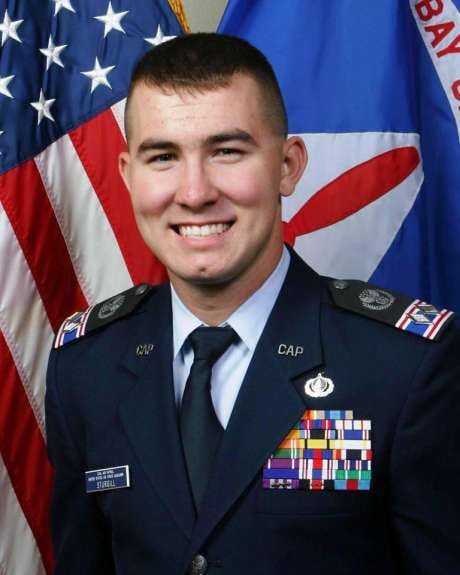A 21-year-old airman died of heat stroke during Survival, Evasion, Resistance and Escape training last July, according to an Air Force investigation report released Tuesday.
Airman 1st Class Kenneth Sturgill of Livermore, California, was found unconscious July 7, 2016, during SERE training at Joint Base San Antonio-Camp Bullis, Texas, with a 112-degree temperature. Instructors and a medical technician tried to save Sturgill with cardiopulmonary resuscitation and a defibrillator, the ground accident investigation board found, but he was declared dead on the scene about a half-hour after he was found unresponsive. Col. Jeffrey Fallesen, president of the investigation board, concluded Sturgill’s death was accidental.
Sturgill is the first person to die while attending SERE Selection School.
Assigned to the 66th Training Squadron, Detachment 3, Sturgill was on the 14th day of a 15-day SERE Specialist Screening course when he died, taking part in a solo living exercise. That exercise is designed to simulate a real-life SERE situation by having SERE specialist candidates complete various tasks by themselves in the wild. Instructors dropped Sturgill off at his designated location at about 11:20 a.m. Three hours later, the report said, instructors checked on him and saw no signs of distress.
It was a hot day, with the local temperature reaching 101.8 degrees by 3 p.m., the report said. At 3:30, another candidate — there were 11 in all — was diagnosed with heat exhaustion, prompting the instructors to drop off an extra five-gallon jug of water with each candidate at about 4:15. The report said instructors dropped the water off at the center of Sturgill’s assigned area and called out to him, and Sturgill thanked them because he was running out of water. The report said instructors didn’t notice any signs of distress from Sturgill, but they didn’t have face-to-face contact with him.
Another candidate saw Sturgill moving around, the report said, but his view was obstructed by foliage. After the candidate lost sight of Sturgill, he heard something that sounded like a large branch falling to the ground. That didn’t concern the other candidate, since loud branches often cracked.
The instructors were supposed to check in with Sturgill one last time at about 5:35 p.m., but couldn’t find him and launched a search party. He was found unconscious on a brush pile at the far edge of his assigned training area at about 6:40 p.m.
According to the report, Sturgill was an ideal candidate for SERE training. He had completed basic military training in June 2016, at the top of his class of 715 trainees. He was well-liked by the other candidates, who described him as “very upbeat” and someone who exceeded the course‘s standards, the report said. He had already finished the academic and laboratory instruction portions of the course, as well as the physical ability and stamina test — a 200-meter swim in under 10 minutes, a 1.5-mile run in less than 11 minutes, eight pull-ups, and 48 sit-ups and push-ups in under two minutes.
The morning he died, Sturgill filled his water containers — a five-quart Camelbak, two two-quart canteens and two one-quart canteens — and, along with the other candidates, dismantled their camp. Instructors checked to make sure their canteens had enough water and gave them two Meals, Ready-to-Eat.
Sturgill successfully completed a solo navigation exercise that began at 9 a.m. He then moved on to the 6-hour solo living exercise, which requires candidates to complete six tasks on their own: prioritize their needs; build a shelter out of a parachute; prepare a fire; construct a ground-to-air signal; identify and procure their sustenance; and adhere to sanitation and hygiene standards. Sturgill appeared to have finished the first four tasks, the report said.
In addition to hyperthermia — or elevated body temperature — Sturgill also displayed signs of hyponatremia, a condition that occurs when total body sodium is depleted or when excess water consumption dilutes sodium in the blood. But while hyponatremia may have been a contributing factor in his death, the investigation board president could not make that determination.

The report said that the tree-crashing sound the candidate heard may have been Sturgill collapsing on the brush pile, although it cannot be determined for sure. Sturgill was also instructed to wear his emergency vest at all times, the report said, but he was found at a considerable distance from his emergency gear. Investigators said that was unusual, since Sturgill previously followed all course instructions, which suggests confusion, delirium or disorientation may have contributed to his death. Headache and weakness sometimes are symptoms of hyperthermia and hyponatremia.
But, Fallesen said, there is not enough evidence to conclude that ”cognitive dysfunction” was a contributing factor in Sturgill’s death.
The report does not identify any significant evidence regarding the supervision of the SERE candidates. But it does note that there was some ”inconsistency between the [water consumption] direction given by instructors and what was understood by candidates. Several candidates believed that they were supposed to drink one quart per hour, and if they didn’t drink all their water they would receive an ”unsat,” or unsatisfactory, rating for that exercise. But while the course’s flight chief remembered telling instructors to make sure candidates were drinking enough, the operations non-commissioned officer — who is the flight chief’s second-in-command — did not recall a specific order that candidates should drink more.
Stephen Losey is the air warfare reporter for Defense News. He previously covered leadership and personnel issues at Air Force Times, and the Pentagon, special operations and air warfare at Military.com. He has traveled to the Middle East to cover U.S. Air Force operations.




